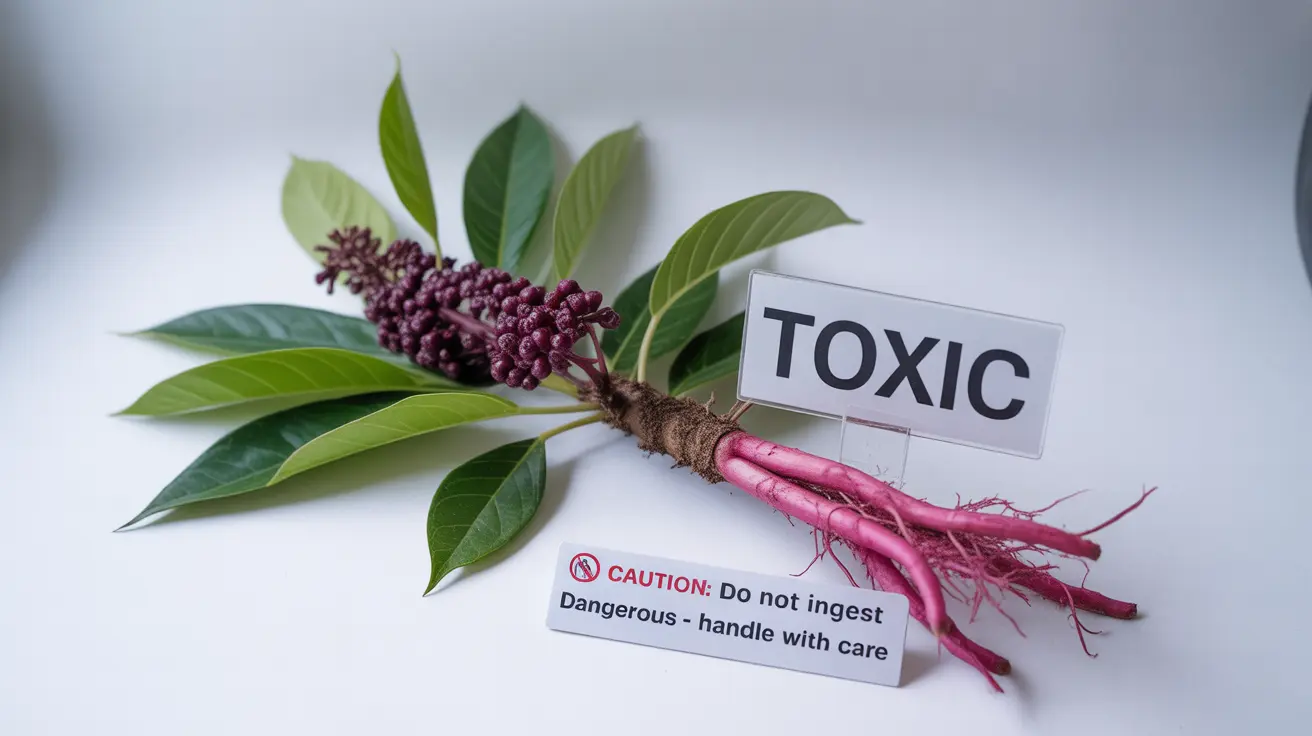Poke root (Phytolacca americana), also known as pokeweed or pokeberry, is a traditional herbal remedy that has garnered attention for its potential medicinal properties. However, this controversial plant requires careful consideration due to its significant toxicity risks. Understanding both its benefits and dangers is crucial for anyone interested in herbal medicine.
While poke root has a history of traditional use in Native American and folk medicine, its application in modern healthcare settings remains limited due to safety concerns. This comprehensive guide explores the scientific evidence, potential benefits, and important safety precautions associated with poke root.
Traditional Uses and Potential Benefits
Historically, poke root has been used in various traditional medicine practices for several purposes:
- Treatment of inflammatory conditions
- Immune system support
- Lymphatic system stimulation
- Skin condition management
However, it's crucial to note that many traditional uses lack robust scientific validation, and the plant's toxicity makes it extremely risky for self-treatment.
Understanding Poke Root Toxicity
The toxic nature of poke root cannot be overstated. All parts of the plant contain dangerous compounds, with the roots and mature berries being particularly poisonous. Even small amounts can cause severe reactions, including:
- Severe gastrointestinal distress
- Respiratory problems
- Heart rate irregularities
- Muscle spasms
- Potential organ damage
Critical Safety Warnings
Due to its high toxicity, poke root should never be consumed raw or prepared without expert guidance. Even experienced herbalists approach this plant with extreme caution, and many modern practitioners avoid it entirely due to safety concerns.
Scientific Research and Medical Applications
Current scientific investigation into poke root has revealed some interesting potential applications, particularly in specialized medical research:
- Anti-inflammatory properties
- Potential anti-cancer compounds
- Immune system modulation
However, these studies are primarily conducted in laboratory settings, and the findings don't necessarily translate to safe therapeutic use in humans.
Safe Handling and Preparation Guidelines
For those who work with poke root under professional guidance, several critical safety measures must be followed:
- Always wear protective gloves when handling
- Never harvest without expert identification
- Process only under qualified supervision
- Keep away from children and pets
- Store safely and label clearly
Frequently Asked Questions
What are the potential health benefits and traditional uses of poke root?
Traditional uses include treating inflammatory conditions, supporting immune function, and addressing lymphatic issues. However, scientific evidence supporting these benefits is limited, and the risks generally outweigh potential benefits for most users.
How dangerous is poke root toxicity, and what symptoms should I watch for if exposed?
Poke root is highly toxic and can cause severe symptoms including severe stomach pain, vomiting, diarrhea, difficulty breathing, rapid heartbeat, and muscle spasms. Immediate medical attention is necessary if exposure occurs.
Is it safe to use poke root supplements or teas for immune support or detoxification?
The use of poke root supplements or teas is not recommended due to the plant's high toxicity and narrow therapeutic window. The risks of serious adverse effects outweigh potential benefits for general wellness purposes.
Can poke root help treat cancer, viral infections, or inflammatory conditions based on scientific evidence?
While laboratory studies have shown some promising results regarding anti-cancer and anti-inflammatory properties, there isn't sufficient clinical evidence to support safe therapeutic use in humans for these conditions.
How should poke root be prepared or handled safely to avoid poisoning risks?
Poke root should only be handled and prepared under the direct supervision of qualified experts. Even then, strict safety protocols must be followed, including proper protective equipment and precise preparation methods. For most people, avoiding use altogether is the safest approach.




